In the ever-evolving landscape of online education, elearning tools have emerged as game-changers, enhancing learning experiences for educators and students alike. These versatile tools enable the creation of customized, interactive, and accessible educational content. This article explores the various categories of elearning tools, key features to consider, top tools in 2023, their benefits, and tips for effective implementation.
Key Takeaways
- Types of Elearning Tools: Discover the various categories of elearning tools, including authoring tools, LMS, video conferencing tools, assessment tools, interactive tools, and content libraries.
- Key Features to Consider: Understand critical features such as usability, integration, customization, analytics, mobility, and security when selecting an elearning tool.
- Top Elearning Tools in 2023: Learn about the top elearning tools in 2023, their unique functionalities, and best use cases.
- Benefits of Elearning Tools: Explore the benefits of using elearning tools, including enhanced engagement, personalization, scalability, flexibility, and efficient tracking.
- Tips for Effective Implementation: Gain insights into effective elearning tool implementation, such as understanding your audience, maximizing interactivity, updating content, encouraging feedback, and monitoring performance.
Table of contents
Introduction
In today’s digital age, elearning tools have become indispensable in the realm of online education, shaping the way we learn and interact with knowledge. They empower educators and learners alike, creating a robust environment that fosters effective learning experiences.
Elearning tools, broadly speaking, are digital platforms and software solutions designed to facilitate the creation, management, and delivery of educational content online. They come in various forms, from learning management systems (LMS) to authoring tools, assessment applications, and video conferencing software. These tools are essential for educators to create compelling courses, manage student progress, and provide real-time feedback.
As technology advances, elearning has seen exponential growth, becoming a cornerstone of modern education. The ongoing global shift towards remote learning, spurred by unprecedented circumstances, has further underscored the significance of elearning tools. They allow institutions and individual educators to offer courses to a wider audience, breaking down geographical barriers, and enabling learners to access high-quality educational resources from anywhere.
The increasing popularity of online education makes it imperative to have reliable elearning tools at one’s disposal. As elearning becomes more widespread, the demand for tools that are easy to use, customizable, and capable of integrating with other software solutions is growing. Elearning tools that offer these features can greatly enhance the educational experience, creating more engaging and effective learning environments.
In this ever-evolving educational landscape, elearning tools are no longer a luxury but a necessity. They are vital for creating tailored learning experiences that cater to the diverse needs of learners and drive successful educational outcomes.
Categories of Elearning Tools
When delving into the world of elearning tools, it is crucial to understand the different categories that these tools fall into. Each category serves a unique purpose in the landscape of online education and plays a pivotal role in the entire learning process.
Authoring Tools: These are the building blocks of any elearning course. Authoring tools enable educators to create custom courses tailored to their specific needs. They offer a range of features, such as templates, multimedia integration, and interactivity options, making it easier to design engaging and informative content. Adobe Captivate, Articulate Storyline, and iSpring Suite are popular examples of authoring tools.
Learning Management Systems (LMS): Once a course is created, it needs a platform for delivery. That’s where LMSs come in. These systems allow educators to manage, deliver, and track elearning courses. They offer functionalities such as course enrollment, progress tracking, and analytics. Moodle, Blackboard, and Canvas are among the most widely used LMSs.
Video Conferencing Tools: With the increasing demand for real-time interaction in online education, video conferencing tools have become indispensable. They facilitate live sessions, making it possible for educators to conduct webinars, lectures, and discussions. Tools like Zoom, Microsoft Teams, and Google Meet are commonly used for this purpose.
Assessment Tools: These tools are used to create quizzes, tests, and surveys that gauge learner comprehension and progress. They help in evaluating performance and providing timely feedback. Tools like Quizlet, Kahoot, and Google Forms are popular for creating assessments.
Interactive Tools: For courses that require hands-on experience or simulation, interactive tools are essential. They enable activities like simulations, gamification, and virtual labs, enhancing learner engagement and retention. Tools like Labster and Cerego are known for their interactive features.
Content Libraries: Not all elearning content needs to be created from scratch. Content libraries are repositories of pre-made elearning content that can be customized and integrated into courses. Websites like Coursera, Udemy, and Khan Academy provide extensive content libraries.
By understanding these categories, educators can select the right elearning tools to create a comprehensive and engaging online learning experience. Each tool category contributes to the holistic development of a course, ensuring that learners have access to high-quality education no matter where they are.
Key Features to Consider
When selecting the right elearning tools, several key features can make or break the effectiveness of an online educational program. Product-led growth is the key to acquiring and retaining users, and your elearning tool should embody this philosophy.
Usability: In the world of Product Marketing, user experience is paramount. Elearning tools should be intuitive and user-friendly, ensuring that both educators and learners can navigate the platform without any hindrance. Simplicity in design and ease of use can significantly enhance the overall learning experience.
Integration: In today’s interconnected digital world, no tool exists in isolation. Your elearning tool should be able to integrate seamlessly with other tools and software solutions. Whether it’s connecting to video conferencing tools for live sessions or linking with content libraries for additional resources, compatibility is essential.
Customization: One size does not fit all in the realm of online education. Elearning tools should offer the flexibility to tailor content to meet specific learning needs. Whether it’s adjusting the pace of learning, modifying content for different skill levels, or personalizing assessments, customization can significantly improve learning outcomes.
Analytics: Data is the cornerstone of any Product Led Growth strategy. Elearning tools should provide robust analytics that offer insights into learner performance. From tracking progress to identifying areas for improvement, data-driven insights can enhance the effectiveness of the learning process and provide valuable feedback to both educators and learners.
Mobility: With the rise of mobile devices, elearning tools should be accessible across multiple platforms. Whether on a desktop, tablet, or smartphone, the ability to learn anytime, anywhere is a critical feature that enhances the flexibility and convenience of online education.
Security: In an age where data breaches and cyber threats are rampant, the protection of user data is crucial. Elearning tools should employ robust security measures, such as encryption and multi-factor authentication, to safeguard user information.
In conclusion, the right elearning tools should embody the principles of Product Led Growth and Product Marketing. They should offer a seamless user experience, integration capabilities, customization options, data-driven insights, mobility, and robust security. By considering these features, educators can select elearning tools that are not only effective but also drive long-term user engagement and satisfaction.
Top Elearning Tools in 2023
When it comes to elearning tools, 2023 has an impressive lineup of products that cater to a wide range of educational needs. These tools are increasingly shaping the way we learn, offering more personalized, engaging, and flexible learning experiences. With a plethora of options available, it’s essential to understand the unique functionalities and best use cases of each tool to find the right fit for your needs.
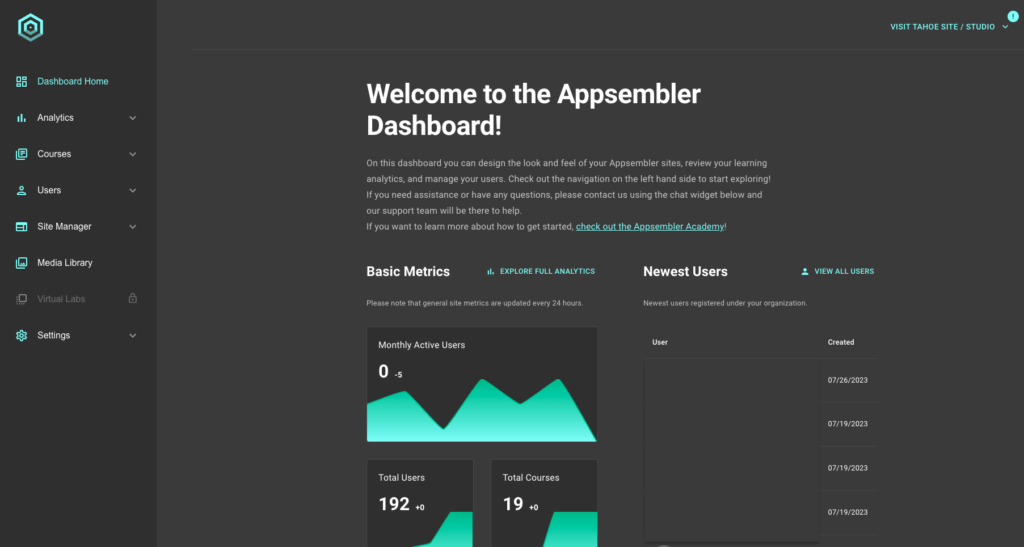
#1 – Appsembler:
Designed for businesses and educators, Appsembler offers an all-in-one solution for creating, delivering, and managing online courses. It boasts user-friendly features, enabling users to customize courses easily and quickly. With its robust analytics, you can gain insights into learner progress and performance. It’s the perfect choice for those who need a comprehensive and easy-to-use elearning platform.
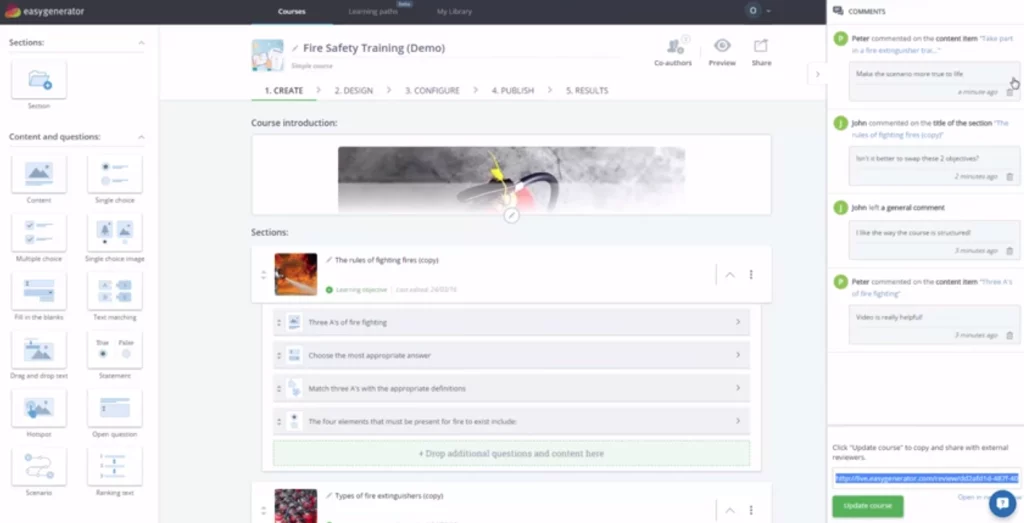
#2 – EasyGenerator:
This authoring tool lives up to its name, allowing users to create engaging courses without any technical expertise. Its drag-and-drop interface and wide range of templates make it a go-to tool for rapid course development. It’s an excellent choice for educators and businesses that require a straightforward, yet effective, tool for creating custom courses.

#3 – Canvas:
As one of the leading Learning Management Systems (LMS), Canvas offers a comprehensive suite of features for course management, delivery, and tracking. It stands out with its user-friendly interface, customization options, and extensive integrations with third-party tools. It is well-suited for educational institutions and large organizations.
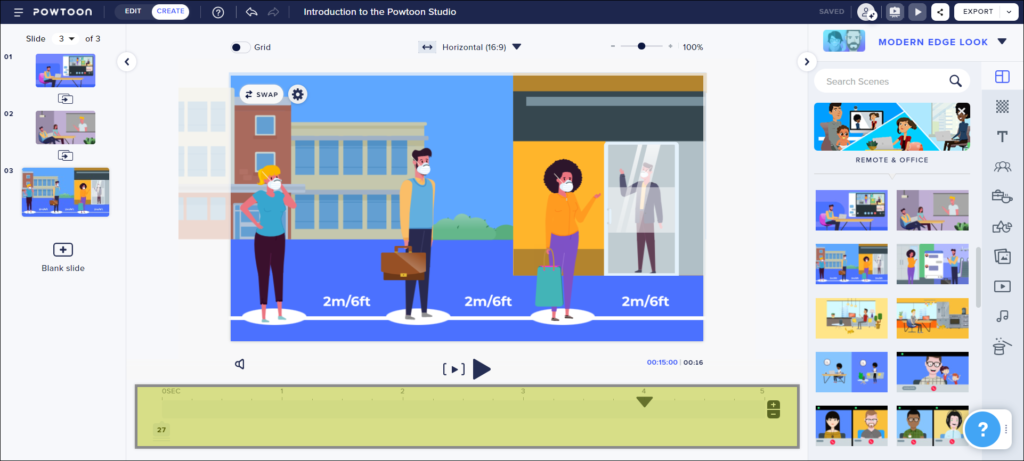
#4 – PowToon:
This tool takes elearning to a whole new level with its ability to create animated presentations and videos. With its user-friendly interface and vast library of templates, it’s a favorite among educators and businesses looking to create engaging multimedia content.
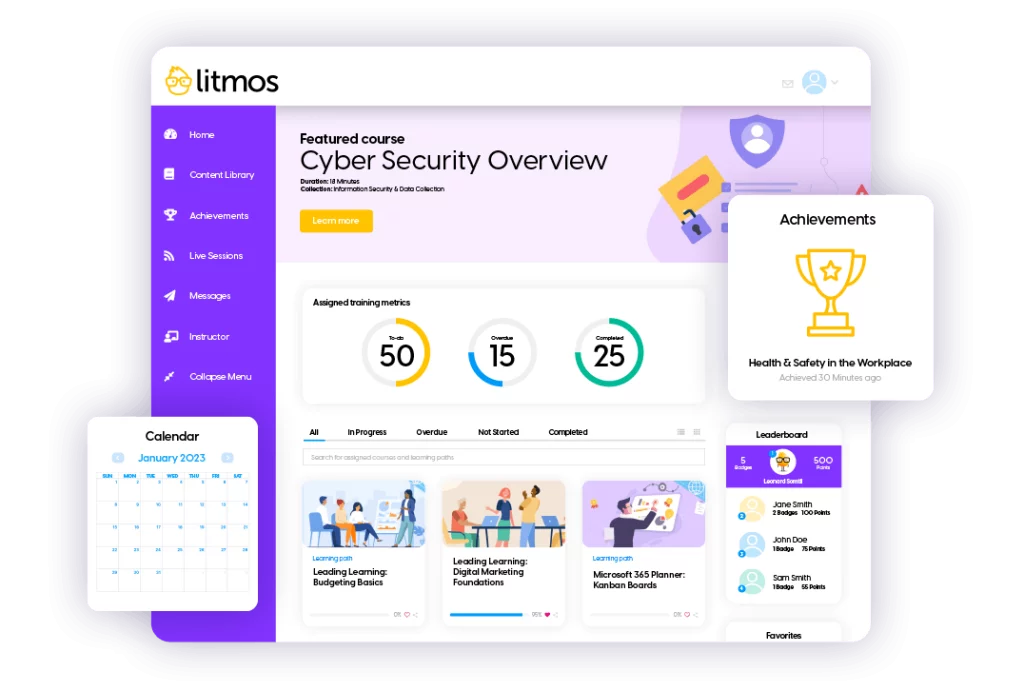
#5 – Litmos:
An LMS designed with businesses in mind, Litmos offers a complete solution for training management. Its standout features include automation tools, a content library, and extensive reporting options. It’s the perfect choice for organizations that need a reliable LMS for employee training.
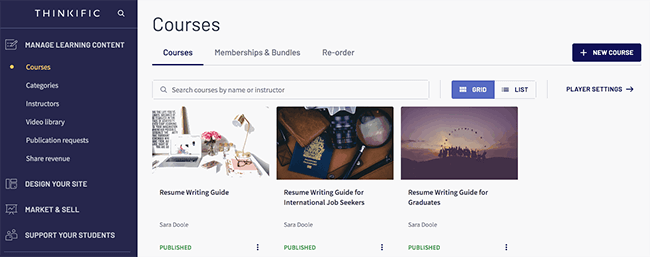
#6 – Thinkfic:
Catering to individual educators and entrepreneurs, Thinkfic is a platform for creating and selling online courses. With its user-friendly course builder, sales and marketing tools, and customization options, it’s a favorite among those looking to monetize their expertise.

#7 – Graphy:
This platform combines course creation, website building, and community management in one. It enables users to create courses, build a branded website, and foster a community around their content. It’s an excellent choice for creators who want to build a brand and community around their courses.
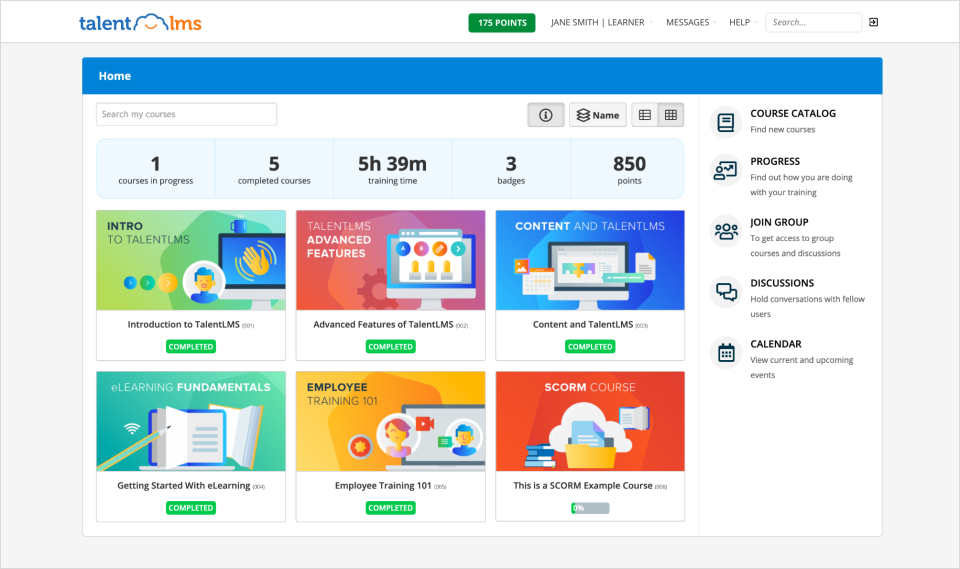
#8 – TalentLMS:
With its clean interface and comprehensive features, TalentLMS is a favorite among businesses of all sizes. It offers course management, reporting, and a mobile app for on-the-go learning. It’s well-suited for organizations that require a versatile LMS.

#9 – Absorb LMS:
This LMS stands out with its intuitive design, automation features, and robust reporting options. It caters to businesses and offers a wide range of features for managing employee training. It’s the perfect choice for organizations that need an LMS with advanced features and a user-friendly interface.
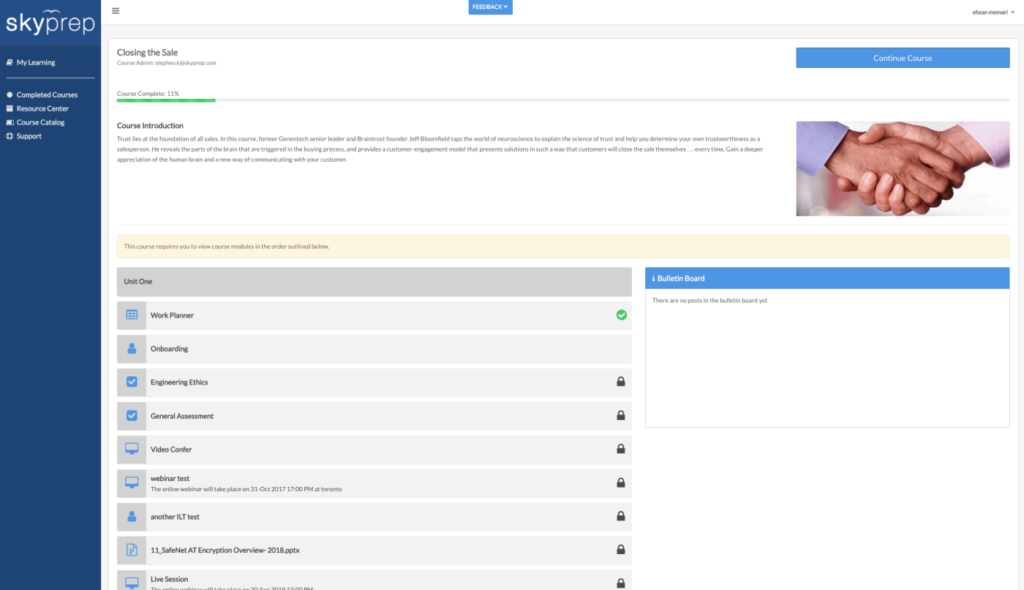
#10 – SkyPrep:
Designed for businesses, SkyPrep offers a comprehensive LMS with a focus on automation and ease of use. Its features include course creation, assessment tools, and extensive reporting options. It’s an excellent choice for organizations that need an LMS that offers both advanced features and ease of use.
In conclusion, the landscape of elearning tools in 2023 is vast and varied. Whether you’re an individual educator, a business, or an educational institution, there’s a tool that caters to your specific needs. By understanding the functionalities and best use cases of each tool, you can make an informed decision and select the right tool for your needs.
Benefits of Using Elearning Tools
Elearning tools bring a revolution to the world of education, offering transformative benefits that reshape the learning experience. Leveraging these tools, educators can create dynamic and personalized courses that cater to a wide audience while maintaining high levels of engagement.
Enhanced Engagement: Elearning tools come packed with interactive features and multimedia, such as videos, simulations, and gamification. These elements keep learners captivated and immersed, turning what could be a monotonous process into an exciting journey of discovery.
Personalization: Every learner is unique, with distinct needs and preferences. Elearning tools allow for customization of content to cater to individual learning styles, pace, and proficiency levels. This personalized approach fosters a deeper connection to the material and increases retention.
Scalability: Whether it’s a classroom of 30 or an organization of 30,000, elearning tools can efficiently manage large audiences. Course materials can be disseminated widely, ensuring that everyone has access to the same high-quality content, regardless of their location.
Flexibility: The traditional constraints of time and space no longer apply with elearning tools. Learners can access content anytime, anywhere, fitting their education around their lives rather than the other way around. This flexibility makes learning more accessible and convenient.
Efficient Tracking: Elearning tools offer robust analytics and tracking features, enabling educators to measure learner progress and performance. Insights into areas of strength and weakness can inform course adjustments and provide feedback, ensuring that learners are on track to achieve their goals.
In sum, elearning tools provide an array of benefits that enhance the learning experience, making it more engaging, personalized, scalable, flexible, and trackable. By leveraging these tools, educators can create courses that not only resonate with their audience but also drive long-term learning and growth.
Appsembler: Your Elearning Solution
In the crowded landscape of elearning tools, Appsembler emerges as a leading choice for educators and businesses seeking a comprehensive, user-friendly solution. This all-in-one platform encompasses the entire elearning process, from course creation to delivery and management. Appsembler’s unique offerings make it stand out from the crowd, offering a seamless, effective learning experience.
Appsembler’s standout features are a testament to its commitment to providing top-tier elearning solutions. Its user-friendly interface makes course creation a breeze, with customization options to suit various learning needs. The platform also includes robust analytics, providing educators with insights into learner progress and performance. These features not only simplify the elearning process but also enhance its effectiveness.
But Appsembler goes beyond just features – its benefits extend to the overall elearning experience. The platform’s intuitive design fosters an engaging, immersive learning environment that keeps students captivated. Its ability to integrate seamlessly with other tools enhances its functionality, providing a comprehensive solution for all elearning needs. Moreover, Appsembler’s focus on personalization ensures that each learner’s unique needs are catered to, leading to improved retention and learning outcomes.
Appsembler plays a pivotal role in elearning, assisting both educators and learners. Educators can easily create customized courses, manage their delivery, and track student performance – all from a single platform. Learners, on the other hand, enjoy a flexible, personalized learning experience that can be accessed anytime, anywhere. In this way, Appsembler bridges the gap between educators and learners, facilitating a smooth, effective learning process.
Don’t just take our word for it – Appsembler users have plenty of positive feedback to share. Educators praise the platform’s ease of use and customization options, while learners appreciate the engaging, accessible courses. Appsembler has earned a reputation as a reliable, effective elearning solution that caters to the diverse needs of its users.
In conclusion, Appsembler stands out as a comprehensive elearning solution that offers a range of features and benefits for both educators and learners. Its user-friendly interface, customization options, and robust analytics make it a favorite among elearning professionals. Whether you’re an educator seeking a seamless way to create and manage courses or a learner looking for engaging, personalized content, Appsembler has you covered.
Tips for Effective Elearning Tool Implementation
Implementing elearning tools effectively can transform the educational experience for both educators and learners. With a strategic approach, elearning tools can create engaging, personalized, and effective learning environments. Here are some tips for making the most of your elearning tools:
- Understand Your Audience: Knowing your learners is the first step towards creating effective elearning content. Understand their learning preferences, background knowledge, and goals. Are they visual learners, or do they prefer text-based content? Do they need basic information or advanced topics? Cater your content to their needs for a more personalized and effective learning experience.
- Maximize Interactivity: Interactive elements can significantly enhance engagement and retention. Incorporate quizzes, simulations, and interactive graphics into your courses. These elements not only make learning more enjoyable but also allow learners to actively engage with the material, leading to better understanding and retention.
- Regularly Update Content: The world of elearning is dynamic, and content can quickly become outdated. Regularly review and update your content to keep it current and relevant. Whether it’s incorporating new research findings, updating statistics, or adding new multimedia elements, keeping your content fresh ensures that your learners are getting the most up-to-date information.
- Encourage Feedback: Feedback from learners can provide valuable insights into the effectiveness of your elearning content. Encourage learners to share their thoughts on the course material, the platform, and their overall learning experience. This feedback can help you identify areas for improvement and enhance the overall quality of your elearning content.
- Monitor Performance: Continuously assess and improve your elearning content. Use analytics tools to monitor learner performance, identify areas where learners may be struggling, and adjust your content accordingly. Regular monitoring and adjustment ensure that your elearning content remains effective and continues to meet the needs of your learners.
In conclusion, implementing elearning tools effectively requires a strategic approach that considers the needs and preferences of your audience, maximizes interactivity, keeps content updated, encourages feedback, and continuously assesses and improves content. By following these tips, you can create an engaging, effective, and dynamic elearning experience that fosters learning and growth.
Conclusion
In the age of digital transformation, elearning tools are reshaping the landscape of education. These tools enable educators to create personalized, interactive, and accessible learning experiences, democratizing education and making it available to a wider audience. Elearning tools cater to diverse learning preferences, promote engagement, and allow for efficient tracking and assessment of learner performance.
The benefits of elearning tools extend beyond convenience. They offer a dynamic and engaging way to learn, providing customized content, interactivity, and real-time feedback. Whether it’s a small classroom setting or a large organization, elearning tools can efficiently manage and deliver high-quality educational content.
However, with a plethora of elearning tools available, it’s essential to consider your unique needs and explore suitable options. Consider the learning preferences of your audience, the features you need, and the level of customization and interactivity you want to achieve. Keep your content updated, encourage feedback, and continuously monitor performance to ensure your elearning experience remains effective and engaging.
In conclusion, elearning tools are revolutionizing education, making it more accessible, personalized, and engaging. Take the time to explore and implement the right tools that cater to your needs and elevate your online education experience. Embrace the power of elearning tools and unlock the potential of digital education.
Frequently Asked Questions
Elearning tools are categorized into various types based on their functionality. These include Authoring Tools for creating custom elearning courses, Learning Management Systems (LMS) for managing, delivering, and tracking elearning courses, Video Conferencing Tools for live interactive sessions, Assessment Tools for creating quizzes and tests, Interactive Tools for simulations and gamification, and Content Libraries for accessing pre-made elearning content.
Elearning tools enhance online education by providing interactive features, multimedia content, and personalization options. They enable efficient management of large audiences, offer flexibility in terms of when and where learners can access content, and allow educators to track learner progress and performance. This results in increased engagement, customization, scalability, and efficient tracking of the learning process.
When selecting an elearning tool, consider features like usability, integration with other tools, customization options, analytics for insights into learner performance, mobility for accessibility across devices, and security to protect user data.
Some top elearning tools in 2023 include Appsembler, EasyGenerator, Canvas, PowToon, Litmos, Thinkific, Graphy, TalentLMS, Absorb LMS, and SkyPrep. Each of these tools offers unique functionalities and caters to different use cases, catering to a wide range of elearning needs.
Appsembler is an all-in-one elearning platform that assists educators and learners alike. It allows educators to create customized courses, manage their delivery, and track student performance. Learners benefit from a flexible, personalized learning experience that can be accessed anytime, anywhere. Appsembler’s user-friendly interface, customization options, and robust analytics make it a preferred choice among elearning professionals.
For effective elearning tool implementation, understand your audience and cater to their learning preferences. Maximize interactivity by incorporating engaging elements. Keep your content updated and relevant. Encourage feedback from learners for insights and improvement. Continuously monitor performance and adjust content accordingly for an effective and dynamic elearning experience.



